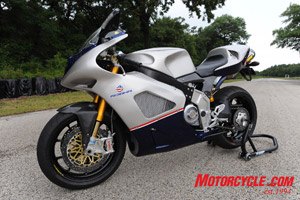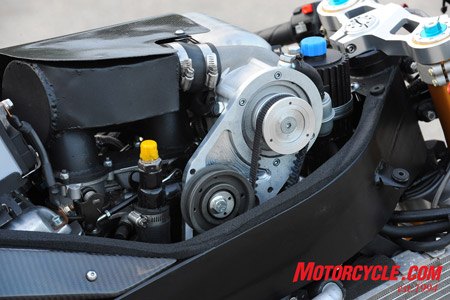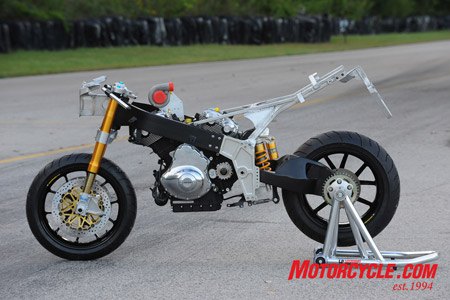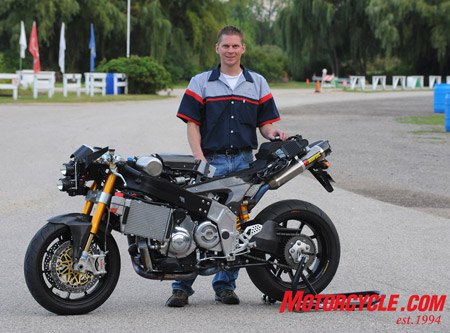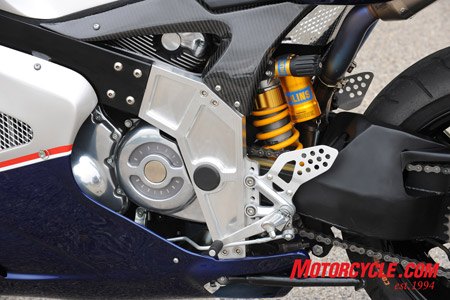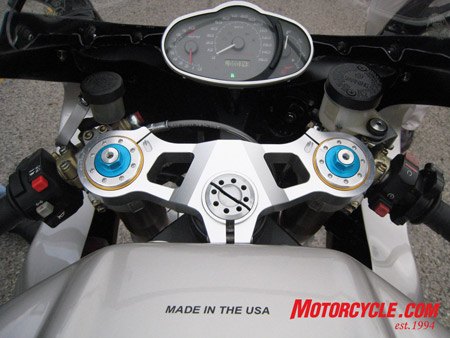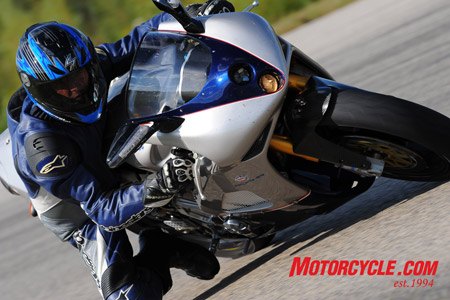




The good: The 2009 Volkswagen Tiguan S packs the performance of a sport compact car into a small SUV. Neat Auto Hold option keeps the vehicle stationary on steep hills and at long traffic lights.
 The bad: The interior lacks excitement. Cabin tech is virtually nonexistent at this trim level. Sound quality on the audio system is poor at higher volume levels.
The bad: The interior lacks excitement. Cabin tech is virtually nonexistent at this trim level. Sound quality on the audio system is poor at higher volume levels.
 The bottom line: Former VW GTI owners who need more space for a family will absolutely love the performance of the Volkswagen Tiguan S, but those looking for high-tech options will want to look further upmarket.
The bottom line: Former VW GTI owners who need more space for a family will absolutely love the performance of the Volkswagen Tiguan S, but those looking for high-tech options will want to look further upmarket.
CNET editors' review
- Reviewed on: 09/10/2008
One of the first things we noted about the 2009 Volkswagen Tiguan S is its similarity to Volkswagen's hot hatch, the GTI MkV. Both vehicles have 200 horsepower 2-liter turbocharged four-cylinder engines. Both have about the same amount of passenger space and a similar wheelbase and track width. Aside from the Tiguan's taller stance, you'd be hard pressed to note any difference between the two vehicles when driven with a degree of civility.
However, when driven aggressively, the differences become more apparent. The Tiguan's taller ride height and ground clearance translate into a higher center of gravity and more body roll through hard turns. The Tiguan's extra 271 pounds over the four-door GTI equals a 0 to 60 time of 7.8 seconds versus the GTI's 6.9 seconds.
The GTI could beat the pants off of the Tiguan on a track, but that's not really the point. Consider that the Tiguan is a compact SUV packing performance that's only slightly bested by Volkswagen's hottest sport compact, but with more cargo volume and a smoother ride quality, and the Tiguan is all the more impressive.
Test the tech: Mountain road exploration
With specifications that rival those of a sport compact car and a transmission that boasts a Sport mode, we decided to see if the Tiguan S could put its money where its mouth is on a twisty mountain road. After finding an appropriately serpentine course for our test, we had to print directions because of our Tiguan's lack of a navigation system. Hopping behind the wheel, we studied our course and hoped we wouldn't get lost.

The first leg of our trip took us through the sort of terrain on which the Tiguan is most at home: city streets and highways. In light traffic with the transmission set to drive, the Tiguan's small size made it easy to steer into and out of traffic. On the short freeway blast up the mountains, the Tiguan felt stable and remarkably carlike. However, at cruising speeds turbo-lag, coupled with the transmission's slow downshifts, added up to slow top end acceleration. Reaching the foot of the mountain, we put the transmission into Sport mode and started up. Immediately we noticed that the Sport mode increased responsiveness by keeping the revs up and the turbo spinning. The shifts of Sport mode didn't feel any faster than in Drive, but the rpm at which the shift happens is much higher in the powerband. An added bonus was the Sport mode's engine braking feature that downshifts the transmission as the vehicle decelerates to help slow the vehicle and prepare for exiting turns.

Though the 200 horsepower engine motivated the Tiguan up the mountain without struggling, we weren't able to really get up to speed due to the extremely technical aspects of our chosen course. Our path up the mountain consisted of a two-lane road with dozens of switchbacks and hairpin turns. As fantastic as the Tiguan's Sport mode was coming up the mountain, it was terrifying on the winding descent, often downshifting harshly midturn and upsetting the vehicle's weight transfer. Not wanting to go spinning off into oblivion, we put the transmission into Manual mode to get better control over the gear changes. Manual mode's shifts are the same speed as the other two modes, but now that we didn't have to worry about an unexpected gear change we were able to focus on the Tiguan's handling.
The Tiguan's power steering made for light steering effort, but didn't really communicate much about what the wheels were doing underneath us. Through the hairpin turns, the Tiguan exhibited the expected front-wheel-drive understeer, which was easily correctable with a lift of the throttle. The poorly maintained mountain road put the Tiguan's suspension through its paces. With the window down, the hissing of the dampers could be heard echoing off the sheer rock face of the mountain, but from the driver's seat the ride was smooth and controlled.

At the bottom of the mountain, we were greeted by the beautiful Pacific Coast. After the intense concentration required navigating the mountain, the sweeping curves and ocean breeze were a treat. We put the transmission back into sport mode and headed home, impressed by the versatility of the Tiguan's performance.
In the cabin
In a word, the cabin of the Tiguan S is utilitarian. Perhaps a better word would be boring. Almost every surface is finished in the same matte black plastic and the seats are a dull charcoal cloth. In the optional tan interior color, there's at least a little visual excitement, but the charcoal interior of our Tiguan was downright depressing. The materials didn't feel cheap and all of the elements of the cabin seemed well made, but none of the Tiguan's sporty nature is reflected by the interior's dull execution.

The standard audio system is just as dull as the cabin in which it sits. In the S trim level, the only audio sources are FM/AM radio, single-disc CD audio playback with MP3 support, and an aux-in hidden in the center console. There's no option available for iPod/USB support, no HD or satellite radio available, and no Bluetooth hands-free. Audio quality is satisfactory, but suffers from dull highs and heavy, distorted bass at high volume.
The Tiguan has a few neat features, such as Auto Hold and an electric parking brake, which eliminates the need for an emergency brake handle. When activated, the Auto Hold feature will hold the brakes after a complete stop, keeping the car stationary even after the brake pedal is released. When the accelerator is depressed, the Tiguan immediately releases the brakes and the car moves. This is a neat feature for drivers who spend a lot of time waiting at traffic lights or for drivers of the six-speed manual version of the Tiguan S who live in hilly areas. In stop-and-go traffic, we found the feature annoying. Fortunately, it's easily enabled and disabled with the touch of a button.
Out back, our Tiguan was equipped with rear side airbags, a $350 option, and a 60-40 split folding rear seat. Seats folded flat, we were able to easily fit two bikes with the front tires removed into the back of the Tiguan.
Under the hood
The 2-liter turbocharged four cylinder that motivates the Tiguan is a gem of an engine. There's a good deal of turbo-lag, which makes easing into a slow start sluggish. Once you get it going, however, the Tiguan easily scoots through traffic. Flooring the accelerator from a stop, the turbo-lag is slightly less evident, but at around 2,500 to 3,000rpm the 200 horsepower and 207 foot-pounds of torque kicks in hard, thrusting the little SUV forward and loudly chirping the front tires. With the traction control deactivated, the tire chirp becomes a longer and louder squeal. It may not actually be fast, but the Tiguan certainly feels quick.

Utilizing direct injection technology, the Tiguan averages an EPA estimated 18 city mpg and 24 highway mpg. That sort of fuel economy isn't bad for an SUV, but still a bit lower than most vehicles in the Tiguan's segment.
Delivering power from the engine to the front wheels is Volkswagen's six-speed automatic transmission with Tiptronic. This transmission features three forward modes: drive, sport, and manual. Drive mode features smooth shifts and programming for comfort and fuel economy. Sport mode raises the shift point to keep the engine in the powerband to reduce turbo lag and increase responsiveness for more aggressive driving. The manual mode lets the driver choose the gears by pushing the shifter forward and backward. We found it best to leave the car in Drive for regular urban and highway driving. The manual mode came in handy for keeping the car in first in stop-and-go traffic and for downshifting to get the revs up in preparation for merging with faster moving traffic.
The Tiguan's suspension makes a valiant attempt to tame the body roll of the tall compact, but it doesn't eliminate it. The short wheelbase makes the vehicle easy to rotate around turns, but like most front-wheel driven vehicles, the Tiguan displays piggish amounts of understeer when pushed to its limits. Thanks to a high suspension that's tuned for softness, those limits are fairly low.
That same high suspension is the reason for the Tiguan's smooth ride and commanding view of the road ahead. You wouldn't want to go off road with the Tiguan's front-wheel drive and very untrucklike 6.9 inches of ground clearance, but poorly maintained roads and all but the most severe potholes are soaked up by the suspension's longish travel.
In sum
While we were pleasantly surprised by the performance of the Tiguan S, the cabin was just too spartan for our tastes. At the S trim level, the Tiguan has an MSRP of $24,300 with the only options available being the rear side airbags ($350) and a no-cost six-speed manual transmission. We can't really recommend the Tiguan S for drivers who are also technophiles, but the higher trim levels are another story.
Stepping up to the Tiguan SE trim (MSRP $26,925) will upgrade the interior to a higher grade cloth, upgrade the odometer to a multifunction trip computer similar to Audi's offerings, increase the wheel size to 17 inches, and add steering wheel controls for the audio system, cruise control, and trip computer. Moving to SEL trim level (MSRP $30,990) upgrades the interior to leather, replaces the audio system with a 600-watt Dynaudio 10 speaker setup, and adds the Adaptive Front Lighting system with Bi-Xenon headlamps that turn up to 15 degrees in response to steering inputs. At SE trim and above, tech options come available in the form of a panoramic sunroof ($1,300), a touch-screen navigation system with a 30GB hard drive (20GB available for music), a back up camera ($1,990), and 4Motion all-wheel-drive ($1,950).
Prospective Tiguan owners will also want to look at the Toyota RAV4, the Nissan Rogue SL, and the Ford Escape Limited, all of which can be had with premium audio and Bluetooth integration for about the same price as the base model Tiguan. All three of these alternatives average 22 city and 28 highway mpg, but do so with 30 fewer horsepower than the Tiguan.













